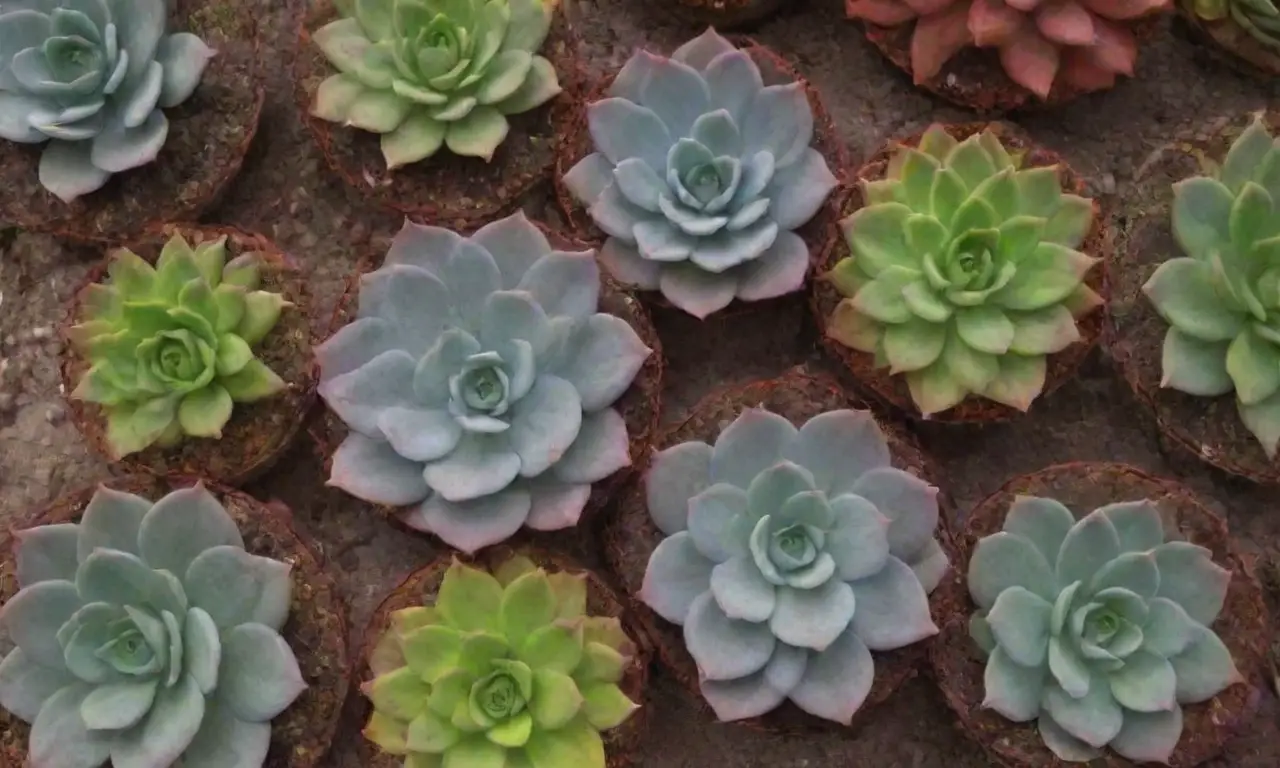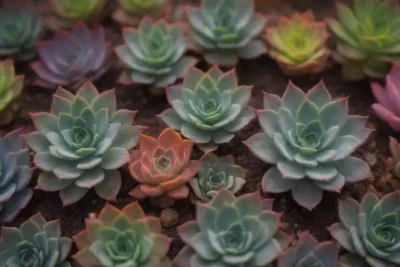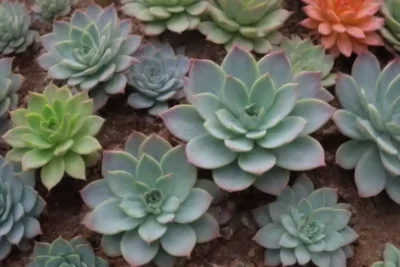
The pH Myth: Do Succulents Really Need Specific pH Levels?

Introduction
Succulents have gained immense popularity among plant enthusiasts and casual gardeners alike for their striking appearance and minimal care requirements. Originating from arid regions of the world, these fascinating plants have evolved unique adaptations that allow them to thrive in conditions where many other plants would struggle. However, a common myth persists surrounding succulents: the idea that they require specific pH levels in the soil to flourish. This article delves deeply into this myth while examining the truth about the pH requirements of succulents, emphasizing the importance of understanding their needs for optimal growth.
In the following sections, we will explore the role of pH in plant health, the specific needs of succulents, and the implications of soil pH on their growth. We'll also provide practical tips for succulent enthusiasts and debunk common misconceptions regarding soil pH. Whether you're a seasoned gardener or a budding plant parent, understanding the truth about pH levels and their impact on succulents will empower you to create the ideal environment for these remarkable plants.
Understanding pH in Soil
Soil pH measures the acidity or alkalinity of the soil, generally on a scale from 0 to 14. A pH of 7 is considered neutral; values below 7 indicate acidic soil, while values above 7 signify alkaline soil. The pH level of the soil can significantly affect nutrient availability, microbial activity, and overall plant health. A properly balanced soil pH allows plants to access essential nutrients efficiently. For instance, in acidic soils, certain nutrients like phosphorus may become less available, affecting plant growth adversely.
When discussing pH, it is essential to understand the chemistry behind it. Hydrogen ions (H⁺) play a vital role in determining soil pH. They interact with various compounds present in the soil, influencing the solubility of nutrients. Thus, a Soil with high hydrogen ions will typically exhibit a lower pH, while a soil with fewer hydrogen ions will have a higher pH. This complex balance can lead to confusion, especially for new plant parents wondering what their plants truly require.
In many cases, the pH level affects not just nutrient availability but also the function and activity of the soil's microorganisms. Beneficial bacteria, fungi, and other microorganisms are pivotal for breaking down organic matter and facilitating nutrient uptake. These organisms thrive within a specific pH range; hence, understanding pH can offer insights into how to create a livable environment for these microorganisms, which, in turn, supports plant health. With this foundational knowledge, we can now explore the specific needs of succulents in relation to soil pH.
The pH Requirements of Succulents
One of the enduring myths surrounding succulents is that they require specific pH levels to grow successfully; many suggest maintaining a pH range around 6.0 to 6.5 for optimal results. However, the reality is more nuanced. While succulents do benefit from well-draining and slightly acidic to neutral soil, they are surprisingly adaptable and can thrive in a wider pH range, generally around 5.5 to 7.5. The adaptability of these plants is a testament to their evolutionary history, allowing them to survive in diverse soil conditions.
Moreover, it’s crucial to understand that while some potting mixes for succulents are formulated to provide a specific pH level, the majority of commercially available soil types come with a natural variability in pH owing to different composition and organic content. Therefore, it may not be feasible to achieve an exact desired pH, and it may not be necessary either. The focus should shift toward creating a well-drained soil mix that promotes healthy root systems rather than fixating on a specific pH number.
 Why All Succulent Arrangements Aren't the Same: Myth Explained
Why All Succulent Arrangements Aren't the Same: Myth ExplainedAnother aspect to consider is that the pH of the soil can shift over time due to various factors, including watering practices, fertilization, and environmental conditions. For instance, the use of certain fertilizers may alter soil pH, therefore influencing nutrient availability. Succulents can often tolerate minor fluctuations in pH, and their roots can adjust, showcasing their resilience. Consequently, rather than obsessively monitoring pH levels, succulent owners can focus on providing an overall healthy growing environment that emphasizes proper watering, light exposure, and soil characteristics.
The Impact of Soil Type on Succulent Health

Soil quality plays a crucial role in determining the success of growing succulents. While many gardeners might prioritize a specific pH level, the truth is that soil texture and drainage often take precedence. Succulents thrive in well-draining soils, which prevent root rot—a common issue for these plants when they are kept overly moist. This means that a well-formulated succulent soil mix can often compensate for a slightly less-than-ideal pH, provided it has excellent drainage properties.
When creating a potting mix for succulents, a blend of materials is typically recommended. The use of perlite, pumice, or sand mixed with a quality potting soil can help ensure that moisture does not remain around the roots for extended periods. These materials have coarse textures, enabling water to flow through quickly while still allowing enough retention for succulents to draw moisture when needed. By focusing on soil composition, succulent lovers can create a primarily favorable environment without the forecasted pH being at the forefront.
Moreover, different types of succulents have adapted to various soil environments in their native habitats, which further demonstrates their flexibility. This adaptability means that they can thrive in various soil types and, by extension, across a range of pH levels. Noteworthy examples include members of the Aloe and Echeveria families, which grow in various geographical locations and soil conditions. As such, these plants have learned to flourish even when soil pH isn’t strictly within the recommended parameters.
Myths vs. Facts: Debunking Common Misconceptions
As with many gardening topics, there are numerous myths circulating about the care and cultivation of succulents, especially concerning their pH needs. One prevalent myth is that succulents will die if the soil pH is even slightly out of their "ideal" range. While it is true that substantial deviations in soil pH can affect nutrient availability, succulents are remarkably resilient and can flourish in less-than-ideal conditions for extended periods.
Another common misconception is that all tubers and fertility additives are contraindicated for succulents due to their sensitivities toward specific pH levels. While succulents thrive on minimal nutrients compared to many other plants, they will respond positively to some diluted liquid fertilizers that contain essential micronutrients when applied sparingly. Proper fertilization practices, such as diluted doses and omitting fertilizers during dormancy, can support healthy growth without drastically affecting soil pH. Therefore, moderation and attention to the plant’s unique needs are key.
 Are Some Succulents More Resilient Than Others? The Truth
Are Some Succulents More Resilient Than Others? The TruthConversely, some think that disturbing the soil or re-potting succulents into new substrates can lead to immediate distress due to changes in pH. While it is true that disruptions can initially impact a plant, succulents often adapt well as long as the new mixture provides good drainage and airflow. Adjusting or readjusting soil conditions can improve resilience and overall plant vigor. Understanding that succulents have extraordinary adaptation skills reassures beginners that minor changes in pH or soil type may not be as detrimental as presumed.
Conclusion
To sum up, the pH myth surrounding succulents and their potential need for specific soil pH levels is rooted in misunderstandings about their adaptability and ability to thrive in various conditions. While maintaining a general soil pH within the range of 5.5 to 7.5 can be beneficial, focusing solely on numbers can obscure the bigger picture of giving succulents a healthy growing environment that prioritizes other factors, such as drainage and nutrient availability.
Ultimately, it's essential for succulent enthusiasts to cultivate an overall understanding of plant care. Each plant species has its own native habitat that informs its unique requirements. Therefore, properly formulating soil mixtures, monitoring drainage, and applying practical practices around watering and fertilizing are more valuable than obsessing over exact pH measurements. Caring for succulents can be a joy rather than a chore, and greater self-confidence in plant care can alleviate the stress surrounding soil conditions.
By embracing the adaptability of succulents and employing sound gardening principles focused on their holistic needs and characteristics, both novice and experienced plant parents can foster vibrant and thriving succulent collections with ease. So whether you're sitting among your succulent treasures or dreaming of the next addition, remember the beauty lies in understanding and nurturing rather than adhering strictly to the numbers.
If you want to read more articles similar to The pH Myth: Do Succulents Really Need Specific pH Levels?, you can visit the Common Myths category.






You Must Read